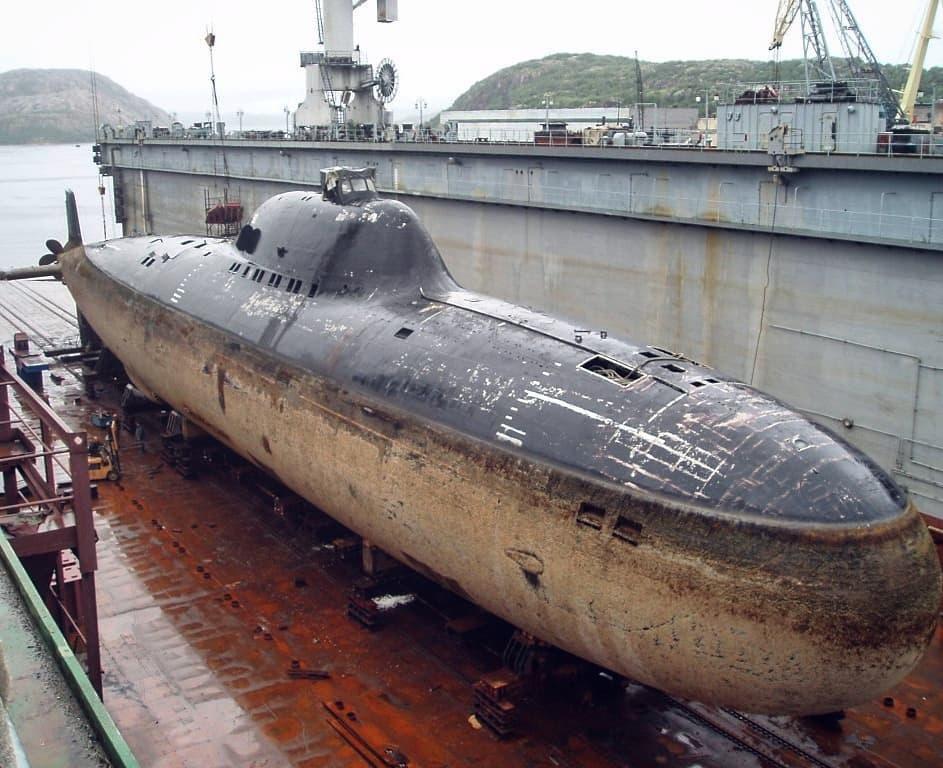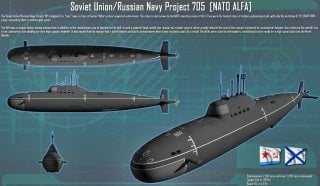The Alfa-Class Submarine was a 'Nuclear Nightmare' for Russia
The Alfa-class submarine, developed by the Soviet Union during the Cold War, was an innovative but problematic vessel. Its titanium hull and unique lead-bismuth-cooled reactor allowed it to achieve record-breaking speeds and deep diving capabilities, making it one of the fastest submarines of its time.
Summary: The Alfa-class submarine, developed by the Soviet Union during the Cold War, was an innovative but problematic vessel. Its titanium hull and unique lead-bismuth-cooled reactor allowed it to achieve record-breaking speeds and deep diving capabilities, making it one of the fastest submarines of its time.
However, the Alfa-class faced significant drawbacks, including noisy operation, complex maintenance, and radiation risks to its crew.
Despite these issues, the Alfa-class remained in service for over 30 years.
Though it proved to be a menace to NATO forces, it was hampered by the very technologies that made it exceptional.
The Alfa-class Submarine was a Nuclear Nightmare for the Soviets
The Cold War era saw some incredible advances in technology in both the Soviet Union and the United States, notably in the area of submarine research and development. Project 705 Lira, or the Alfa-class submarine that was built for the Soviet Navy, was one such advancement. Considered highly innovative for its time, this ambitious Cold War-era project possessed a unique titanium hull and high-speed capabilities.
But its innovative design was tempered by operational challenges.
Alfa-class submarines were meant to be a counterweight to NATO’s various fast-attack subs, notably the ubiquitous Los Angeles-class submarines. The Alfa-class submarine’s primary role was to serve as an interceptor. In other words, it would hunt down and destroy enemy submarines.
Soviet designers wanted the Alfa class to achieve high underwater speeds. The goal was to make a boat that could outrun and outmaneuver any of its American or NATO rivals, either underwater or on the surface.
The Titanium Alloy Hull
Thus, a titanium alloy was used for the ship’s hull.
This hull could go deeper and faster than the steel hulls that most submarines for either the American or Soviet navies could go. Not only does titanium allow for greater speed because it is lighter, but it can withstand greater pressure than can steel.
This meant the Alfa class could go very deep undersea.
These boats could go an average of 46 miles per hour (40 knots), earning the Alfa-class submarine the title of being the fastest submarine in the world for its time. The lighter-weight titanium hull was but one reason for the high speed. Soviet engineers installed a powerful liquid-metal cooled reactor, too.
These two factors operating in tandem ensured the high rate of speed for the sub.
Speaking of reactors, the Alfa class had a unique nuclear-powered reactor. Whereas most submarines use water-cooled reactors as a power source, the Alfa-class was designed with a lead-bismuth-cooled fast reactor. This unique coolant system meant that the boat could be equipped with a smaller reactor, which allowed the Alfa class to travel at faster speeds.
And here is where we get to the drawbacks.
As innovative as the Soviets were when it came to designing nuclear reactors, the Reds were also quite sloppy in their application. I mean, how many nuclear disasters, both at sea and on land, did the Soviet Union endure?
And I’m not just talking about Chernobyl.
Anyway, the reactor on the Alfa-class submarine was one of the biggest drawbacks when it came to operating this boat. Notably, the smaller, lead-bismuth-cooled nuclear reactor created polonium-210 as an unfortunate byproduct. So the submarine could move faster underwater and dive deeper than its rivals, but the longer the crew operated the boat, the greater their exposure to lethal radiation poisoning.
The Nuclear Reactor was a Hot Mess—Literally
Indeed, as Peter Suciu outlined in these pages just a few weeks ago, an Alfa-class submarine designated K-64, the lead boat of this submarine class, suffered a massive reactor failure in 1972. The issue with the lead-bismuth-cooling was that the alloy needed to be constantly heated to prevent it from cooling, solidifying, and basically backing up the reactor. When the reactor on K-64 leaked, the metal alloy solidified as soon as it hit the cooler air outside the reactor.
The leak was so bad that it effectively damaged the surrounding components, compromising the integrity of the K-64.
Soviet engineers opted to mothball the sub rather than try to rebuild it. Interestingly, part of the decommissioning process involved cutting the submarine in half and sending the forward section – with all the controls – to the Soviet Navy’s submarine warfare training center in Leningrad.
Setting aside the K-64 fiasco, even on Alfa-class submarines that operated “within norms,” the liquid-metal coolant was corrosive, which created massive maintenance woes for the ship.
Other problems related to maintaining the submarines. Its greatest strength, the titanium-alloy hull, was also its greatest weakness. Welding the submarine’s hull was a complex affair. As such, it was prone to cracking. That’s definitely not something you want to have occur on any ship – especially one that has a primary function of operating below the waves.

Even if everything was operating according to design specifications, these boats were unsafe. Long-term exposure to unsafe levels of radiation posed significant health risks to the crew. Over time, those who did continuous deployments aboard the Alfa-class subs suffered health declines as a result of constant exposure to polonium-210.
Oh, and the internal temperatures of the submarines as a result of the output of the reactor created hellish conditions for the crews.
Run Toxic (and Loud), Run Deep
One of the primary purposes of any submarine is stealth. But the Alfa class was one of the noisiest submarines the Soviets produced during the Cold War. In effect, the Alfa class, despite its high rates of speed and innovative hull design, failed in the paramount mission of any submarine. These boats were way too noisy beneath the waves, meaning rivals could hear them coming from over the horizon.
So the Alfa class gets high marks for innovation, maneuverability, and speed. But the boat failed to deliver on key elements necessary for any submarine – namely stealth – and the Alfa was notoriously unsafe because of the very elements that gave the bot its greatest advantages: its unique hull and nuclear reactor.
Still, the Alfa class served for more than 30 years, with the final units being retired in 1996. These boats were dangerous for their crews and didn't always work to specifications. But they did last decades in service, and they proved to be a continual menace to NATO ships.
Author Experience and Expertise: Brandon J. Weichert
Brandon J. Weichert, a National Interest national security analyst, is a former Congressional staffer and geopolitical analyst who is a contributor at The Washington Times, the Asia Times, and The-Pipeline. He is the author of Winning Space: How America Remains a Superpower, Biohacked: China’s Race to Control Life, and The Shadow War: Iran’s Quest for Supremacy. His next book, A Disaster of Our Own Making: How the West Lost Ukraine, is due October 22 from Encounter Books. Weichert can be followed via Twitter @WeTheBrandon.
All images are Creative Commons or Shutterstock.
From the Vault
Russia Freaked Out: Why the U.S. Navy 'Unretired' the Iowa-Class Battleships
Battleship vs. Battlecruiser: Iowa-Class vs. Russia's Kirov-Class (Who Wins?)


